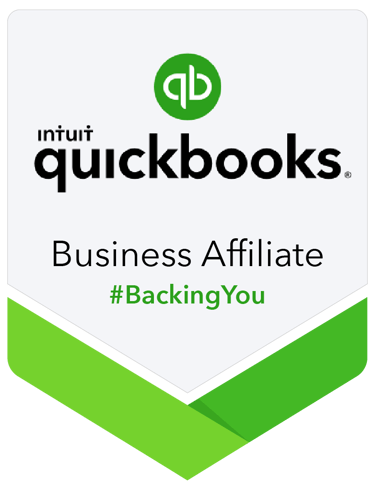Bookkeeping for Business Growth: Smart Financial Decisions
Learn how clean bookkeeping transforms small business decision-making, attracts investors, and supports scalable growth. Practical tips included.
BOOKKEEPING
Jerry Blanco
7/2/20255 min read


How Clean Financial Records Become Your Business's Secret Weapon for Success
Picture this: You're sitting across from a potential investor, and they ask, "Show me your numbers." Your heart races—not because you don't have numbers, but because you're not sure if they tell the story you want them to tell. Sound familiar?
If you're a small business owner juggling multiple roles, you might think bookkeeping is just about tracking expenses for tax time. But here's the truth: your books are actually a crystal ball for your business future. Clean, organized financial records don't just satisfy the IRS—they become your most powerful tool for making smart decisions, attracting funding, and scaling your business with confidence.
Let's explore how transforming your bookkeeping from a necessary evil into a growth engine can change everything about how you run your business.
Why Your Numbers Tell Your Business Story
Think of your financial records like the dashboard in your car. You wouldn't drive cross-country without knowing your speed, fuel level, or whether your engine is overheating. Yet many small business owners try to grow their companies while flying blind financially.
Clean bookkeeping gives you three critical insights:
Cash Flow Patterns: When does money typically come in? When do your biggest expenses hit? Understanding these patterns helps you avoid those heart-stopping moments when you're not sure if you can make payroll or pay rent.
Profit Margins by Service or Product: Which parts of your business actually make money? You might be surprised to discover that your most popular service isn't your most profitable one.
Growth Trends: Are you actually growing, or does it just feel that way? Your books can show you month-over-month and year-over-year trends that reveal the real story.
Making Smart Decisions with Your Financial Data
Pricing Decisions That Actually Work
Sarah, a freelance graphic designer, thought she was doing well because she stayed busy. But when she finally organized her books properly, she discovered she was losing money on rush jobs despite charging a premium. The extra fees didn't cover the overtime costs and stress-related mistakes that required do-overs.
With clean records, she could see exactly which projects were profitable and adjust her pricing accordingly. Within six months, she raised her rates by 25% and became more selective about rush work—and her profits doubled.
Action Step: Track your time and expenses by project or service type for three months. Calculate your true hourly rate for each type of work. You might be shocked by what you discover.
Seasonal Planning Made Simple
Restaurant owner Mike noticed his books showed a predictable summer slump every year, but he always seemed surprised when it hit. Once he started using his historical data for planning, he began saving extra cash during busy months and planning promotional campaigns to boost summer sales.
Action Step: Look at your revenue patterns over the past two years. Identify your peak and slow seasons, then create a cash reserve plan for the lean months.
Inventory and Expense Management
When you can see exactly how much you're spending on supplies, software subscriptions, or contractor payments, you can make informed decisions about where to cut costs or invest more. Many small businesses discover they're paying for subscriptions they forgot about or buying supplies more frequently than necessary.
Attracting Investors and Lenders with Confidence
Speaking Their Language
Investors and lenders think in terms of numbers, trends, and risk assessment. When your books are clean and organized, you can walk into any funding conversation with confidence because you have the data they want to see.
What They're Looking For:
Consistent revenue growth
Healthy profit margins
Manageable debt-to-income ratios
Strong cash flow management
Clear financial processes
The Documentation Advantage
Banks and investors want to see that you run a professional operation. Clean books demonstrate that you take your business seriously and can manage money responsibly—exactly what they want to see before writing you a check.
Quick Win: Start categorizing your expenses consistently. Create categories like "Office Supplies," "Marketing," "Professional Services," and "Equipment." This simple step makes your financial reports look professional and helps you spot spending patterns.
Supporting Scalability Through Financial Clarity
Knowing When You Can Afford to Grow
Growth requires investment—whether that's hiring your first employee, moving to a larger space, or investing in new equipment. Your books tell you when you can afford these investments and how to structure them for success.
Example: Tom's landscaping business books showed he had consistent monthly profits of $3,000 after all expenses. When he wanted to hire an employee at $2,500 per month, his books helped him realize he needed to increase revenue by at least $1,000 monthly to maintain his profit margins while covering the additional payroll taxes and insurance costs.
Building Systems That Scale
As your business grows, you can't afford to spend hours every week trying to figure out where your money went. Clean bookkeeping systems save you time and mental energy that you can redirect toward growing your business.
The Time Investment Reality: Spending 2-3 hours per month on bookkeeping now saves you 20+ hours during tax season and gives you data to make better decisions year-round.
Getting Started: Your 30-Day Bookkeeping Transformation
Week 1: Foundation Building
Choose accounting software (QuickBooks, Xero, or FreshBooks are popular choices)
Set up your chart of accounts (categories for income and expenses)
Connect your business bank account
Week 2: Data Entry and Organization
Input the last three months of transactions
Create consistent naming conventions for recurring expenses
Set up automatic rules for common transactions
Week 3: Report Generation and Analysis
Generate a Profit & Loss statement
Create a simple cash flow report
Identify your top three expense categories
Week 4: Decision-Making Practice
Use your reports to make one business decision (pricing, spending, or investment)
Set up a monthly review routine
Plan your next quarter based on your data
Common Pitfalls to Avoid
Mixing Personal and Business Expenses: This is the fastest way to create a bookkeeping nightmare. Keep separate accounts and credit cards for business use only.
Inconsistent Record-Keeping: Updating your books quarterly instead of monthly makes the task overwhelming and reduces the usefulness of your data.
Ignoring Small Transactions: Those $5 coffee meetings and $15 app subscriptions add up. Track everything to get the complete picture.
When to Consider Professional Help
While many small businesses can handle basic bookkeeping themselves, consider hiring a professional bookkeeper if:
You're spending more than 10 hours per month on bookkeeping
You're making financial decisions without confidence in your numbers
You're planning to seek funding or investors
Your business has complex transactions or multiple revenue streams
A professional bookkeeper doesn't just save you time—they ensure your books are accurate, compliant, and set up to provide the insights you need for growth.
Your Numbers, Your Growth
Remember, bookkeeping isn't about perfection—it's about progress. Clean, organized financial records give you the confidence to make smart decisions, the credibility to attract funding, and the insights to scale your business strategically.
Start with small, consistent steps. Even dedicating one hour per week to organizing your finances will pay dividends in better decision-making and reduced stress. Your future self (and your accountant) will thank you.
Ready to transform your bookkeeping from a chore into a growth tool? Your business success story is hidden in your numbers—it's time to let it shine.


